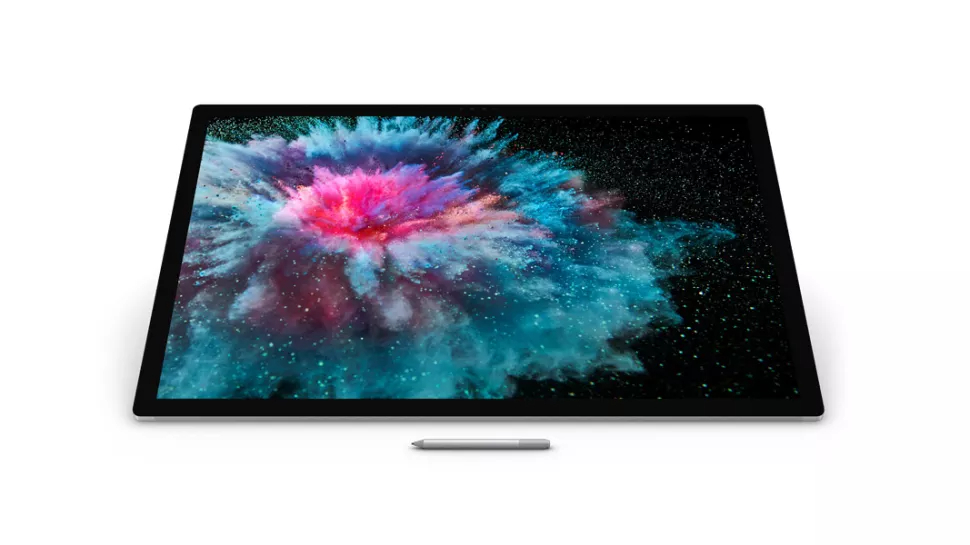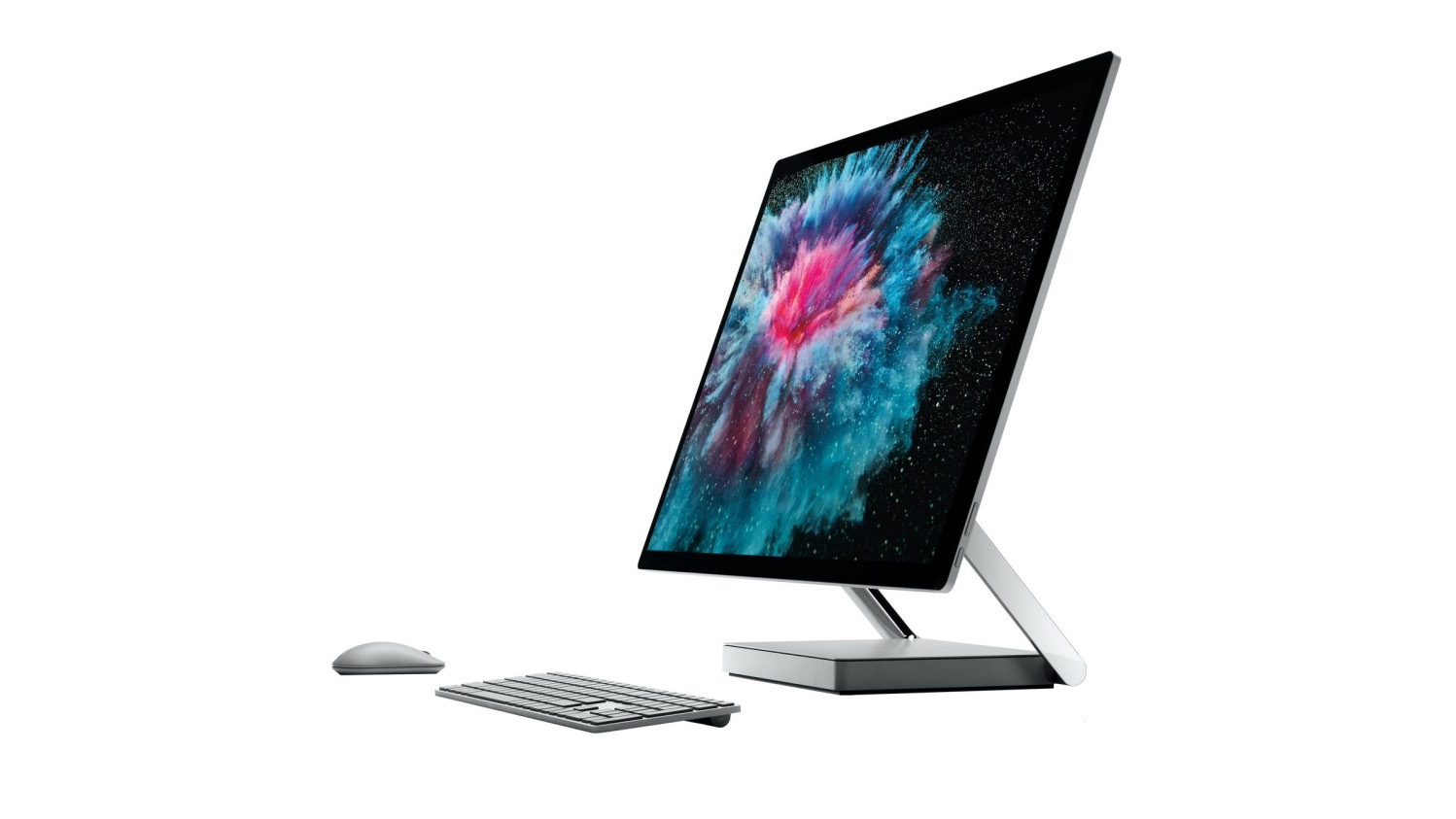Top Ten Reviews Verdict
The Microsoft Surface Studio 2 has one of the best displays on the market. Combine that with the versatile stand and stylus and you’ve got a stylish PC that’s ideal for creative workloads. Older components mean more power is available elsewhere, though, and this rig is extremely expensive.
Pros
- +
Fantastic, high-resolution display
- +
Great-looking and versatile design
- +
Intuitive, accurate stylus
Cons
- -
Outdated components
- -
Extremely expensive
- -
Mediocre peripherals
Why you can trust Top Ten Reviews
The Microsoft Surface Studio 2 is one of the most impressive creative PCs on the market, and one of the only desktops that takes the fight to Apple’s all-conquering iMac and Pro Display XDR. In fact, if you're looking for an all in one computer and don't want to use MacOS, then the Microsoft Surface Studio 2 is one of the best home computers you'll find out there at the moment
Microsoft’s flagship all-in-one must be good to tackle such strong competition, and this machine takes aim with innovative design and a stunning screen.
Screen quality is key, but that’s not the only area where Microsoft’s machine benefits creatives. The double-hinged stand means this PC has more versatility than any rival when it comes to positioning – if you need an upright display or a shallow angle for drawing, it can handle it. And the stylus is superb, too, with accurate and responsive functionality.
The Surface Studio 2 isn’t just about brilliant design. We’ve examined the components inside Microsoft’s machine, and we’ve cast our eye over Microsoft’s customer service and support options, too – so you can figure out if the Surface Studio 2 will fit smoothly into your creative workflow.
Microsoft Surface Studio 2 review:
The Microsoft Surface Studio 2 is designed for people who work in creative applications. If you’re a photographer, videographer, designer or artist then the display provides the quality and precision required to tackle those tasks with accuracy and professionalism.
The Microsoft Surface 2 looks fantastic, so it’s the ideal addition to a stylish office. The 28” display dominates, with its good-looking black bezels and a body that’s just 0.4” thick, and the screen connects to the base with sleek struts of metal. The base is a smart and unassuming square that contains the components – which explains why the display itself is so slim.
The Surface has plenty of practical application, too. The stand has two hinges, which means its height adjusts independently from its angle. That’s fantastic for creative work: it means the display can be positioned at a shallow angle and function like a drafting table or easel, and it can even be laid flat. And, of course, it can sit vertically, too, like a conventional all-in-one.
It allows the Surface to move to a far greater range of positions than the average all-in-one – including the Apple iMac.
Sign up to receive the latest news, reviews, buying guides and deals direct to your inbox
The display itself is superb, too. The 28” panel has a 3:2 aspect ratio and a resolution of 4,500 x 3,000, and those attributes lend themselves to creative work. The aspect ratio means this screen is taller than most, and the added height means more space in creative applications and other software. The huge resolution means photography, video and design work is pixel-sharp and it gives you loads of room for zooming in on fine detail or loading several windows at once.

It’s a great start, and the screen keeps impressing. It's incredibly bright, with impressive vibrancy and color accuracy, and it has top-notch contrast. It also adheres to the sRGB and DCI-P3 color gamuts, so it's able to work in both color spaces. The only thing missing is Adobe RGB ability.
It's a touchscreen, too. It supports ten-point touch functionality, and the Surface comes with a superb stylus with 4,096 pressure levels, tilt support, and a built-in eraser. It's excellent in use: smooth, responsive, and good enough to handle drawing and writing. And, smartly, the stylus is magnetic, and attaches to bands on either edge of the display, so it won't get lost.
The fantastic screen is paired with speakers that offer reasonable quality. For listening to music while you work or watching a movie after you’ve finished, they’re adequate.
The Studio’s base section has four USB 3.0 connectors, a USB-C socket, an SD card reader and a headphone jack alongside the wired internet connector. That’s a reasonable selection of ports for everyday creative workloads, but it’s not brilliant: more USB-C connectivity, faster USB ports and the addition of Thunderbolt would enable a quicker and broader range of peripherals to be used.
Look inside the Studio’s box and you’ll find a wireless keyboard and mouse. They’re low-profile units that offer reasonable comfort, but they’re not going to set the world alight.
Microsoft Surface Studio 2 review: Specs
The Microsoft Surface Studio 2 impresses on the outside thanks to its sleek design and stunning display, but it’s more ordinary on the inside.
The key component is an Intel Core i7-7820HQ. It’s got four Multi-Threaded cores, and its base and boost clock speeds sit at 2.9GHz and 3.9GHz. It’s fine for handling creative work: it’ll zip through Adobe Creative Suite apps, and it’ll tackle video-editing applications, audio utilities and digital painting software without complaint.

The processor may be fine for those creative workloads, but it’s been around since 2017 and is now looking old. Higher speeds and more cores are readily available elsewhere, and often at lower prices. While the Core i7 CPU can handle creative tasks, more power will be necessary to take on true high-end tasks.
The Studio’s processor can’t be changed, but buyers have leeway elsewhere. The Studio can be purchased with 16GB or 32GB of memory, with the latter suitable for particularly tough applications. It’s also available with 1TB or 2TB SSDs; the bigger drive is ideal if you work with large files.
The Studio is available with Nvidia GeForce GTX 1060 or 1070 graphics cores. They’re older chips, but they’re both adequate for running creative software. The 1070 is better, with more memory and higher speeds, so it’s the superior option for after-hours gaming, too.
No matter the spec you purchase, you’ll get Gigabit Ethernet, dual-band wireless, Bluetooth 4.1 and Xbox Wireless. That’s reasonable, but faster Wireless and Bluetooth chips are now commonplace.
And, no matter what spec you purchase, the Studio is not cheap – largely because of the incredible screen and design. The most affordable model has 16GB of memory and a 1TB SSD, and it costs $3,499/£3,549. Upgrading to 32GB of memory and the GTX 1070 raises the price to $4,199/£4,249, and adding the 2TB SSD ups that price to $4,799/£4,749.
It’s enormous money, but not surprising when you consider the wider market. If you want to spec up a 27in Apple iMac with similar components, it’ll cost you upwards of $3,000/£3,000 or more, and the Apple Pro Display XDR is larger and more capable than the Studio’s screen but costs between $4,999/£4,599 and $5,999/£5,499. You’ll potentially have to consider Apple’s $999/£949 Pro stand and your own PC on top of that fee, too.
Microsoft Surface Studio 2 review: Is an all in one computer worth it?
An all-in-one systems like the Studio 2 are tempting for creative workloads: you’ve got that great screen, versatile stand and in-built touch support. Being able to haul the system from the box and get working with minimal fuss is ideal, too, especially if you’re not tech savvy.
All-in-one PCs may not always be the best option when compared to conventional desktops, though.
If you buy a pre-built desktop PC from a big company, or a reputable local system-builder, you’ll gain several advantages. You’ll have newer components, and you will usually have more component choice, too – indeed, if you buy from a local company then you’ll be able to hand-pick your specification. Desktop PCs have more upgrade room, too, so you can add or alter components in the future. These advantages are even more pronounced if you build your own PC.
And, of course, buying a desktop PC means that you need to buy a display. There’s a busy market for creative and professional monitors, and there are plenty of alternative options if the Studio’s display doesn’t quite hit the spot. You might want a physically larger display, or a wider monitor. Some people would prefer a screen that can adhere to the Adobe RGB color gamut. If a traditional desktop sounds like more your thing, check out our Dell XPS desktop PC review.
Microsoft Surface Studio 2 review: User Reviews
The Microsoft Store doesn’t have user reviews, but the Surface Studio 2 has been reviewed by customers on plenty of other retail websites.

Customers consistently love the large, high-quality display, and say that it’s ideal for creative work – and, similarly, they love the versatility of the dual-hinge design, too. Elsewhere, people praise the accurate, comfortable stylish, the Studio’s aesthetics, and its robust build quality.
Negatively, people weren’t impressed with the speakers, which they described as weak and mediocre. Buyers weren’t blown away by the keyboard and mouse, either: people found them acceptable for everyday use, but not particularly large, comfortable or accommodating.
Microsoft Surface Studio 2 review: Customer Service
Microsoft’s support portal is excellent. Articles about popular topics provide clear, straightforward help with plenty of illustrations, and there are clear links to contact links, the community forum and the various accessories that can be used with this PC.
Microsoft also makes the Surface Diagnostic Toolkit available, which can be used to update the system, identify problems and point you towards solutions.
If you purchase the Surface from the Microsoft store, the device is covered by a one-year warranty, and the PC also has a 60-day returns policy, 90 days of free support and the option to attend free virtual workshops. The one-year warranty is reasonable and entirely expected, but lots of PC companies offer longer warranties and you’ll have to pay extra if you want more coverage.
It’s a pretty good slate of support options, though: comprehensive, straightforward and easy to navigate. It’s reassuring.

Should you buy the Microsoft Surface Studio 2?
If you work in high-end creative software then there’s a lot to like about the Microsoft Surface Studio 2. The stunning, high-resolution display is one of the best on the market and is only really outpaced by Apple’s hardware.
Combine the brilliant screen with the superb, versatile stand and the top-notch stylus options and you’ve got an all-in-one that’s well-suited for artistic and creative tasks. If you’ve got a healthy bank account and want a high-quality all-in-one while remaining in the Windows ecosystem, the Surface Studio 2 is the best option.
If you just need a PC for everyday computing, though, the Studio is too unique and expensive – you won’t make use of its features. The outdated internals mean it’s not suitable if you’re chasing top speeds, and it’s not well-suited to gamers. Also consider other machines if you want a PC that you can alter and upgrade in the future.
Which Microsoft Surface Studio 2 spec should you choose?
There isn’t a huge amount of variety when it comes to the Microsoft Surface Studio 2’s specifications.
If you need a PC for mainstream creative tasks, you’ll be absolutely fine with the most affordable Studio – after all, it’s still got the Core i7 processor, 16GB of memory and a 1TB hard disk.
You only need to upgrade to 32GB of memory if you’re running particularly tough applications. Similarly, only choose the 2TB SSD option if you will be working with large files – otherwise lots of that space will be wasted.
Mike Jennings has been a tech journalist for more than thirteen years, and he covers a wide range of topics, from gaming laptops and graphics cards to consumer software, business machines and high-end desktops. He’s written for PC Pro, TechRadar, Wired, Stuff, TrustedReviews, Custom PC, IT Pro, and many more outlets. He lives in the UK and is interested in gaming, writing and motorsport.


